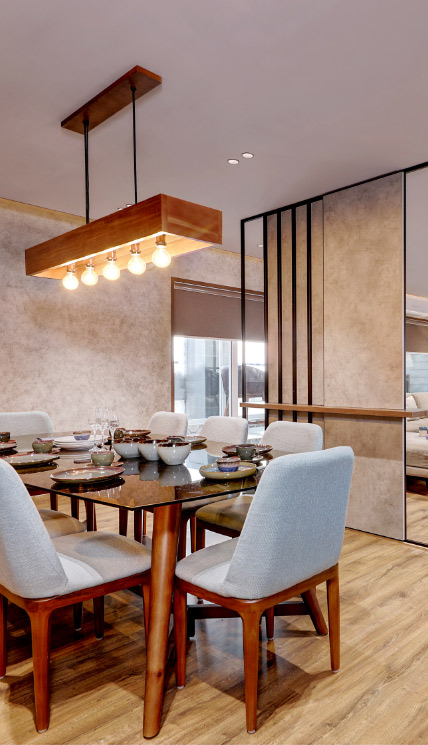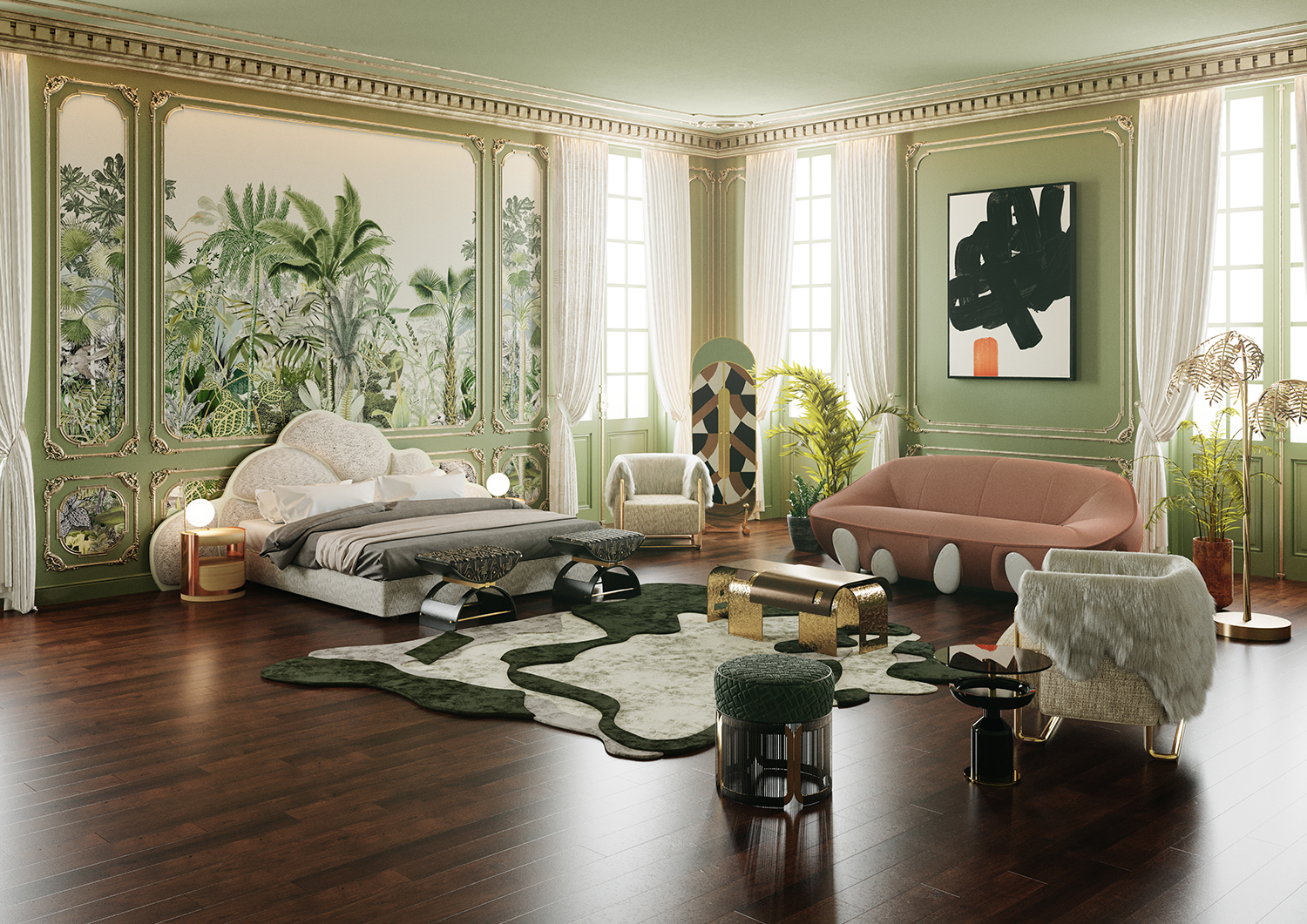Discover the Most Recent Patterns in Interior Decoration for a Stunning Home Improvement
In the world of interior style, remaining attuned to arising fads is necessary for producing rooms that reverberate with both performance and aesthetic appeal. In addition, integrating components of biophilic layout and vintage accents can dramatically enrich a home's character.
Bold Color Palettes
As home owners increasingly seek to share their uniqueness, vibrant shade combinations have actually become a popular trend in interior decoration. This activity encourages using striking hues that depart from conventional neutrals, permitting for more tailored and vibrant space - miami interior design. The combination of dynamic shades not just improves the aesthetic appeal of a home yet also mirrors the personality and lifestyle of its inhabitants
Designers are currently trying out color mixes that evoke emotion and produce special atmospheres. From deep jewel tones like emerald and sapphire to vibrant accents of coral and mustard, these options supply a fresh alternative to the traditional. Accent walls, furniture pieces, and attractive accessories work as optimal canvases for showcasing these strong palettes.
Furthermore, the layering of shades can produce visual depth and intrigue, changing an ordinary area right into a fascinating environment. Homeowners are motivated to welcome their creative thinking, using color to establish prime focus or to unify various layout aspects within a room. As the pattern remains to evolve, using vibrant color combinations signifies a change in the direction of even more expressive and customized interior style, making homes not simply functional, however also a real representation of specific style.
Sustainable Materials
The enhancing emphasis on individuality in interior decoration has not only sparked using strong color combinations however has likewise enhanced awareness around lasting materials. Homeowners and developers alike are progressively prioritizing green options, recognizing their influence on both visual appeals and the atmosphere.
Lasting products, such as reclaimed wood, bamboo, and recycled steels, are becoming mainstream options for furnishings, flooring, and decorative elements. These materials not just offer unique textures and tones but additionally add to lowering waste and decreasing the carbon impact linked with brand-new manufacturing procedures.
Integrating lasting products into insides can produce an unified balance between style and responsibility. For example, natural fibers like jute and hemp are gaining traction in fabrics, supplying sturdiness and comfort while advertising eco-conscious living.
Furthermore, the increase of accreditations and labels, such as FSC (Woodland Stewardship Council) and Cradle to Cradle, helps customers make notified selections regarding the sustainability of their acquisitions. As more individuals look for to develop areas that mirror their values, the integration of lasting materials will unquestionably play a crucial role in shaping the future of interior style, making sure appeal without compromising the earth.

Multifunctional Spaces
In today's vibrant living settings, multifunctional areas have become an essential pattern in interior layout, satisfying the varied needs of contemporary homeowners. As urban living commonly demands reliable use room, developers are significantly developing locations that serve multiple purposes without jeopardizing design or comfort.
The combination of multifunctionality allows home owners to optimize their living locations, transforming rooms to adapt to various tasks. As an example, a visitor room can function as an office, including a pull-out workdesk and smart storage services that maintain appearances while boosting use. Open up layout likewise sustain this pattern, motivating liquid activity in between rooms and advertising flexibility in design.

Inevitably, embracing multifunctional areas not only enhances the functionality of a home yet likewise shows a modern strategy to living, where functionality fulfills advanced layout. - Architecture Firm

Biophilic Design
Accepting the concepts of biophilic layout, visit our website modern indoor spaces increasingly incorporate natural components to foster a much deeper link between residents and their environment. This layout viewpoint emphasizes the combination of nature into the developed setting, producing rooms that advertise well-being, productivity, and sustainability.
Key elements of biophilic layout include making use of all-natural materials, such as wood and stone, which bring this website warmth and structure into interiors. Big home windows and open designs enhance all-natural light, welcoming the outdoors in and producing a smooth transition between within and outdoors. Plants play a crucial function in this strategy, offering not only as attractive aspects yet additionally as air purifiers that enhance indoor air top quality.
In addition, water functions, such as water fountains or aquariums, can be integrated to stimulate a relaxing environment, while natural color schemes influenced by earth tones and plant improve the total aesthetic. By prioritizing these aspects, biophilic layout not just enriches the aesthetic allure of an area however additionally nurtures the mental and psychological health and wellness of its inhabitants, making it an essential fad for those looking for an unified living atmosphere.
Vintage and Retro Accents
As house owners seek to instill personality and fond memories into their rooms, vintage and retro accents have actually become a prominent fad in interior decoration. These aspects not just stimulate memories of past ages yet additionally include depth and character to contemporary setups. The charm of classic pieces hinges on their distinct tales and craftsmanship, typically crafted from materials that are no more widespread in contemporary production.
Incorporating retro accents can be accomplished with various methods, such as selecting statement furniture, like mid-century modern chairs or art deco tables, which serve as focal factors in an area. In addition, dynamic color schemes reminiscent of the 1960s and 70s, next page featuring vibrant patterns and textures, can develop a captivating ambience.
Devices play a crucial function in this trend; assume classic lamps, retro wall surface art, or patterned fabrics that effortlessly mix old-world charm with modern-day aesthetic appeals. When carried out attentively, these accents can harmonize with modern decoration, developing a well balanced and welcoming setting. Ultimately, vintage and retro aspects supply a classic appeal, allowing homeowners to commemorate background while welcoming the conveniences of contemporary living.
Final Thought
In verdict, the newest trends in indoor layout emphasize the value of producing rooms that mirror originality while promoting sustainability and health. Incorporating biophilic style promotes a deeper connection to nature, while vintage and retro accents include unique character.